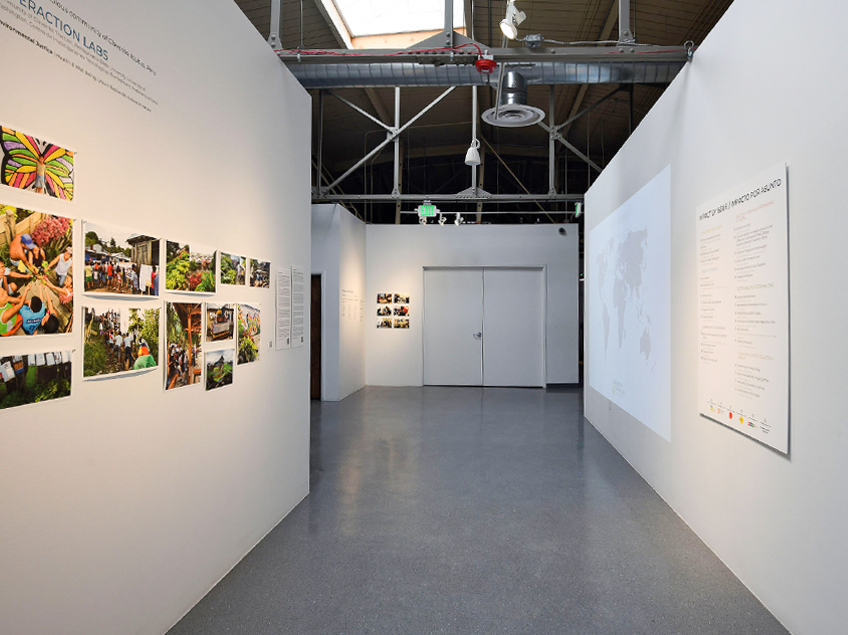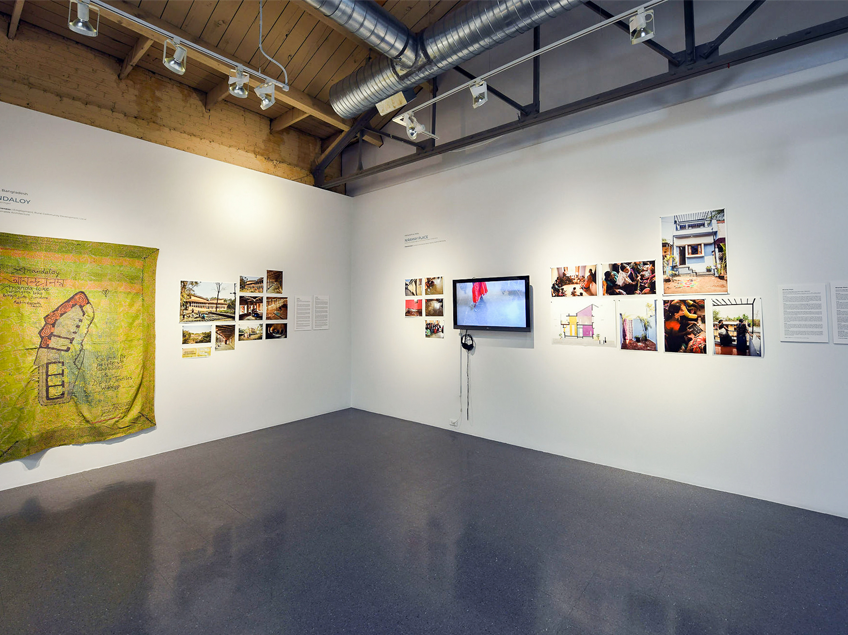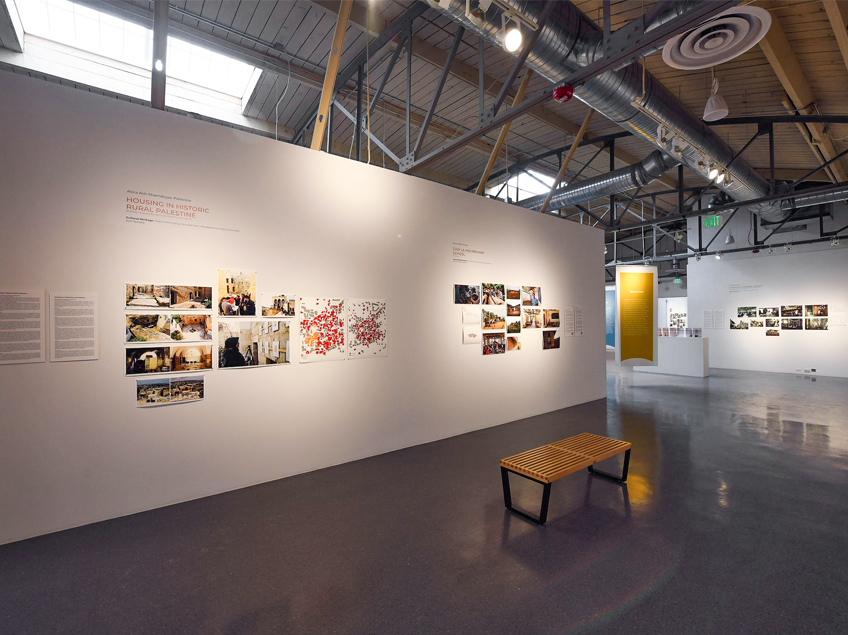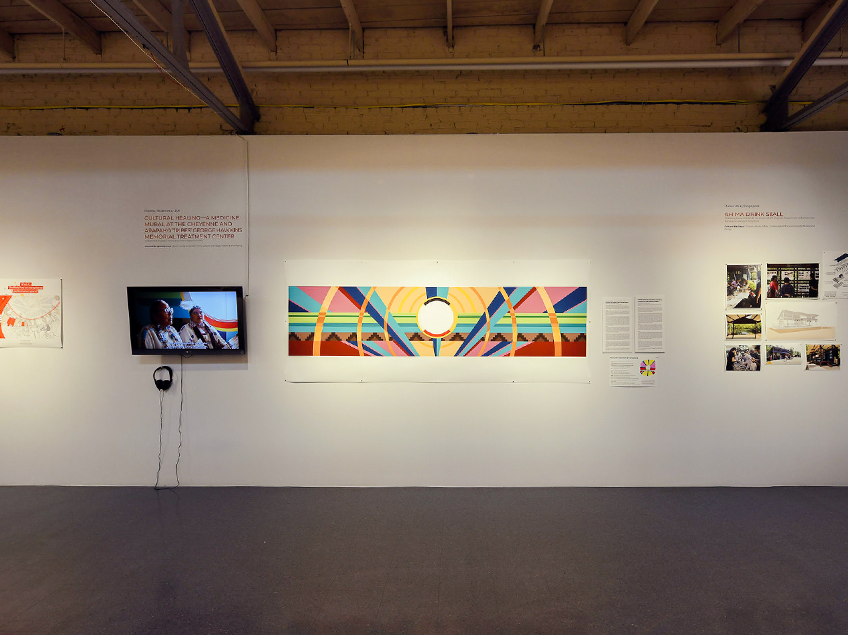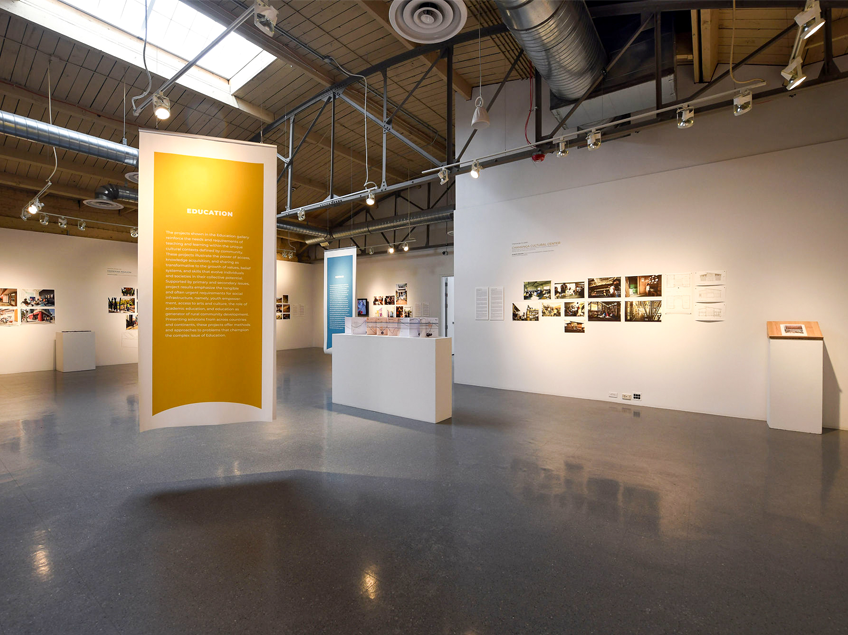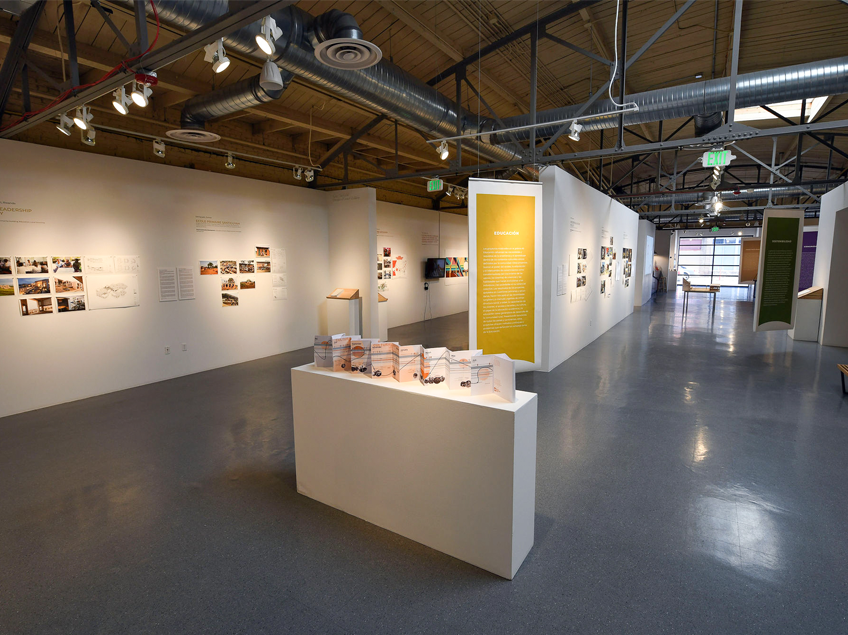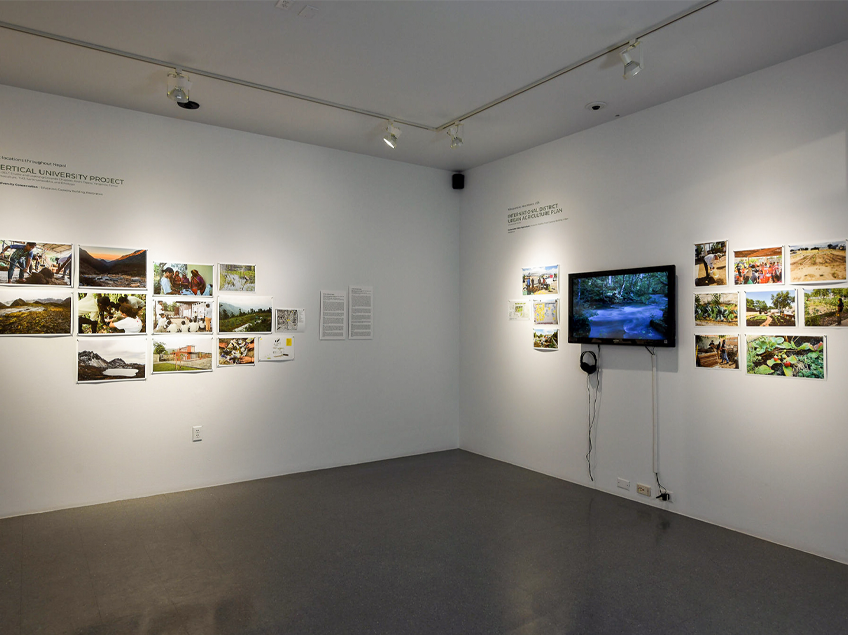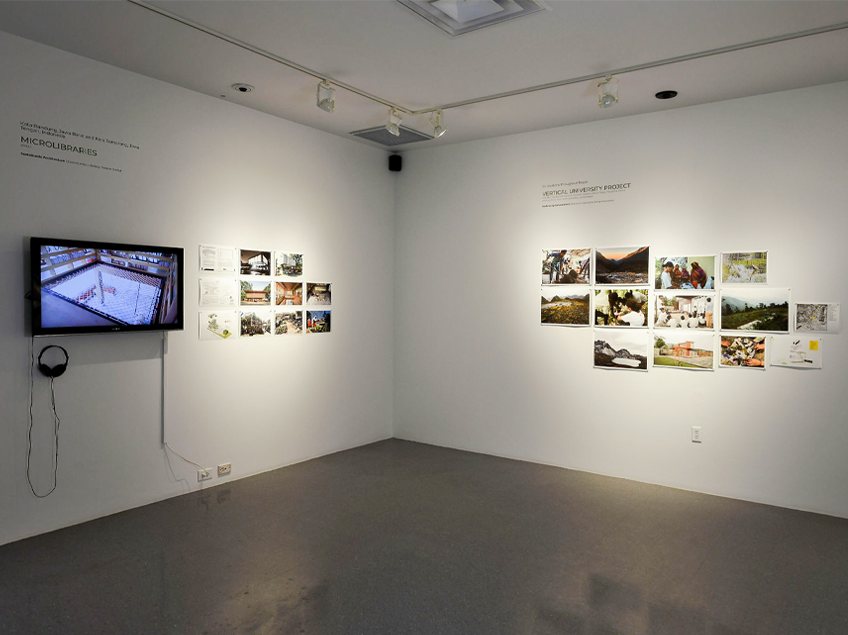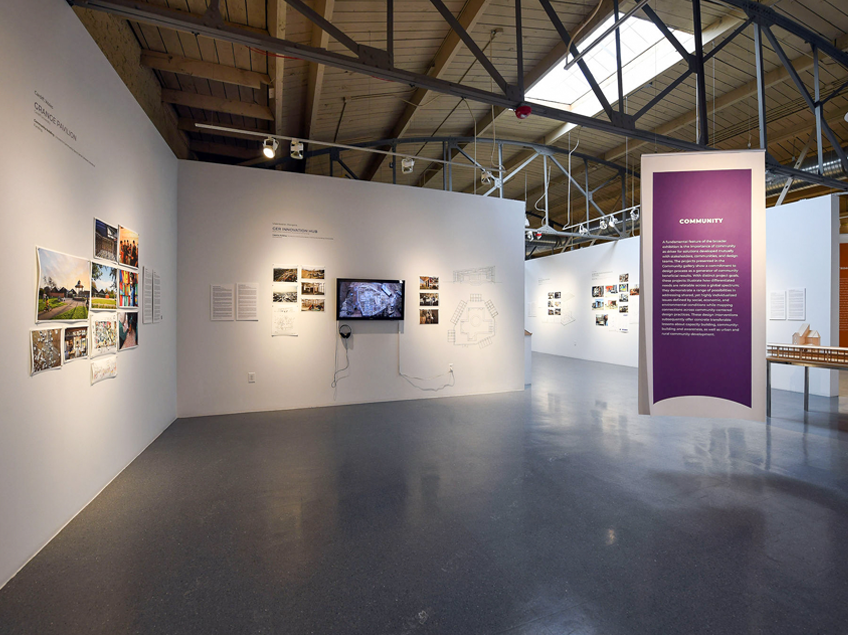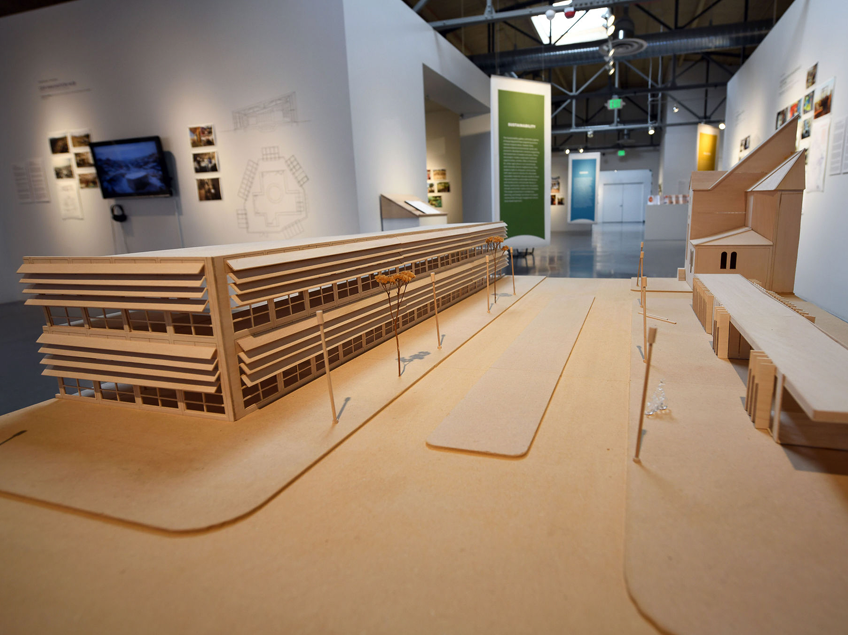January 14 – March 19, 2022
Visionary architecture, culturally responsive design realized in mud and bamboo, and a catalyst for local farmers and master craftspeople to come together coalesced into a place where disability and diversity is celebrated. The soaring roof lines, curving walls and ramp of Anandaloy proclaim empowerment and access, transforming locally sourced building materials in a structure that embodies inclusion and generates circular economies. Created out of the need to provide support and therapy for disabled villagers, the Anandaloy Building hosts a center for disabilities and Dipdii Textiles, a small fair trade textiles studio that sustains female tailors. Located in rural Rudrapur, Bangladesh, this project is one of the thirty examples of socially engaged work featured in Design for the Common Good (DCG) International Exhibition. Opening January 14 and on view through March 19, 2022, at the Metropolitan State University of Denver’s Center for Visual Art (CVA), the Design for the Common Good International Exhibition showcases public interest design projects from six continents and twenty-two countries.
The exhibition presents projects designed collaboratively with communities to create opportunity and solutions from within. The resulting exchange of ideas in this exhibition provides compelling evidence that designers and stakeholders work best together when sharing resources and knowledge that aim to improve quality of life for all people.
Richly documented through artifacts, photography, plans, videos, and design process graphics, the exhibition tells the individual and collective stories of projects selected from within the five international design organizations that comprise the DCG network, including a curated selection of regional works. Exhibited according to key issues each project addresses, the Design for the Common Good International Exhibition brings the extraordinary value of public interest design to the forefront where projects across the globe share a profound connection to the social, economic, and environmental fabric of life.
Public interest design champions the direct involvement of communities and stakeholders in the design of buildings, environments, products, and systems. It is a practice that advocates for transferrable knowledge, evolving processes, and activating participation while tackling complex issues. Unified by a collective vision for the potential of public interest design, these projects feature community-centered processes led through participatory design, education, research, and design evaluation.
The exhibition was curated and organized by Lisa M. Abendroth, Professor of Communication Design at Metropolitan State University of Denver and co-founder of the SEED Network. Exhibition design includes a collaboration with faculty and undergraduate students from MSU Denver’s Communication Design program, Industrial Design department, and with the Center for Visual Art.
Featured Projects
African Leadership University
Kigali, Gasabo District, Rwanda
MASS Design Group
Agbogbloshie Makerspace Platform
Accra, Ghana
Dk Osseo-Asare, Yasmine Abbas, AMP Makers Collective
Ah Ma Drink Stall
Pulau Ubin, Singapore
TAN Beng Kiang, CHUNG Er Pei Ethan, LAM Ching Yan, Department of Architecture, National University of Singapore
Alternative Shelter & Village Building
Portland, Oregon, USA
Center for Public Interest Design (CPID), Portland State University School of Architecture
Anandaloy
Rudrapur, Bangladesh
Studio Anna Heringer
Auraria Bike Pavilions
Denver, Colorado, USA
ColoradoBuildingWorkshop, University of Colorado Denver
Beloved Community Village
Globeville, Colorado, USA
Radian
bilding
Innsbruck, Austria
./studio 3 – Institute of Experimental Architecture, University of Innsbruck
Bong’s Place Macassar’s Storytelling Shack
Macassar, Cape Town (Western Cape), South Africa
The University of Cape Town, Cape Peninsula University of Technology, RWTH Aachen University & PBSA Dusseldorf in collaboration with Studiolight
Chamanga Cultural Center
Chamanga, Ecuador
Portland State University, Tokyo University, Munich University of Applied Sciences, Atarraya Taller de Arquitectura, Opción Más
Cultural Healing—A Medicine Mural at the Cheyenne and Arapaho Tribes’ George Hawkins Memorial Treatment Center
Clinton, Oklahoma, USA
Cheyenne and Arapaho Tribes, Blue Star Integrative Studio
Ecole Primaire Santiguyah
Santiguyah, Guinea
imagine structure GmbH, Cologne/Frankfurt; Institut Supérieur d’Architecture et d’Urbanisme, ISAU Conakry; Peter Behrens School of Architecture, Düsseldorf; RWTH Aachen University
Emergency Quarantine Facilities
Metro Manila, Philippines
WTA Architecture and Design Studio
Fish River Rangers Accommodation
Fish River Station, Northern Territory, Australia
University of South Australia
Gaw La Heh Primary School
Karen State, Burma
Gyaw Gyaw
Ger Innovation Hub
Ulaanbaatar, Mongolia
Rural Urban Framework, University of Hong Kong
Grange Pavilion
Cardiff, Wales
Cardiff University
Housing in Historic Rural Palestine
‘Asira Ash Shamaliyya, Palestine
RIWAQ-Centre for Architectural Conservation
Imagine Castlegate
Sheffield, England
Sheffield School of Architecture (SSoA), University of Sheffield
Infozentrale auf dem Vollgut
Berlin, Germany
Natural Building Lab, Technical University (TU) of Berlin
InterACTION Labs
Informal amphibious community of Claverito, Iquitos, Peru
Community of Claverito, Traction, Pennsylvania State University, University of Washington, Centro de Investigaciones Tecnológicas Biomédicas y Medioambientales
International District Urban Agriculture Plan
Albuquerque, New Mexico, USA
Groundwork Studio
Living Rooms at the Border
San Ysidro, California, USA
Estudio Teddy Cruz + Fonna Forman in collaboration with Casa Familiar
Microlibraries
Kota Bandung, Jawa Barat, Indonesia, and Kota Semarang, Jawa Tengah, Indonesia
SHAU
Naidi Community Hall
Naidi Village, Fiji
CAUKIN Studio
Niramay Place
Maharashtra, India
Community Design Agency, Curry Stone Design Collaborative
OBENauf Bed-and-Breakfast
Unternalb, Austria
Vienna University of Technology / design.build studio
Passerine Pavilion
Lawrence, Kansas, USA
Dirt Works Studio, University of Kansas
Restore Oakland
Oakland, California, USA
Designing Justice + Designing Spaces
Vertical University Project
Six locations throughout Nepal including Koshi Tappu (plains), Yangshila (Chure hills),Kurule-Tenupa (mid-hills), Tinjure Milke Jhaljhale (mid-Himayalas), Lungba Samba (high Himalayas), and Papung (alpine region)
KTK-BELT Studio, Koshi Tappu Learning Grounds, Yangshila Learning Grounds, Tamur Permaculture Learning Grounds, TMJ Learning Grounds, Sankhuwasabha Learning Grounds, Dhokpya Learning Grounds
Exhibition Virtual Tour
About Design for the Common Good
Design for the Common Good (DCG) is a coalition of networks committed to design practice, education, and research that improves social, economic, and environmental outcomes for its users. It promotes local accountability and maintains a global perspective while connecting designers, students, researchers, collaborators, and end-users, sharing best practices, stimulating and sustaining dialogue.
Currently five international networks represent this effort to support and promote systemic change in the practices of design with the intent of building on common ground. These networks are the Curry Stone Foundation, DesignBuildXchange, Live Projects Network, Pacific Rim Community Design Network, and the SEED Network. While each network has a unique focus, together they acknowledge a shared vision: supporting the growth of design for the common good.
DCG brings together international constituencies to connect and extend conversations stimulated through international conferences, awards, and exhibitions. The collaboration seeks to strengthen the confluence of forces needed to craft truly healthy, resilient, and sustainable design projects that create positive change in the world. www.designforcommongood.net
Events
Below, you will find a recording of the talk given at the opening reception on January 14, 2022.
Exhibition Introduction and Welcome, Curator, Lisa M. Abendroth; Keynote address, Sergio Palleroni, Professor and Director, Center for Public Interest Design, Portland State University and Executive Committee Chair, Design for the Common Good Network.
____________________________________________________
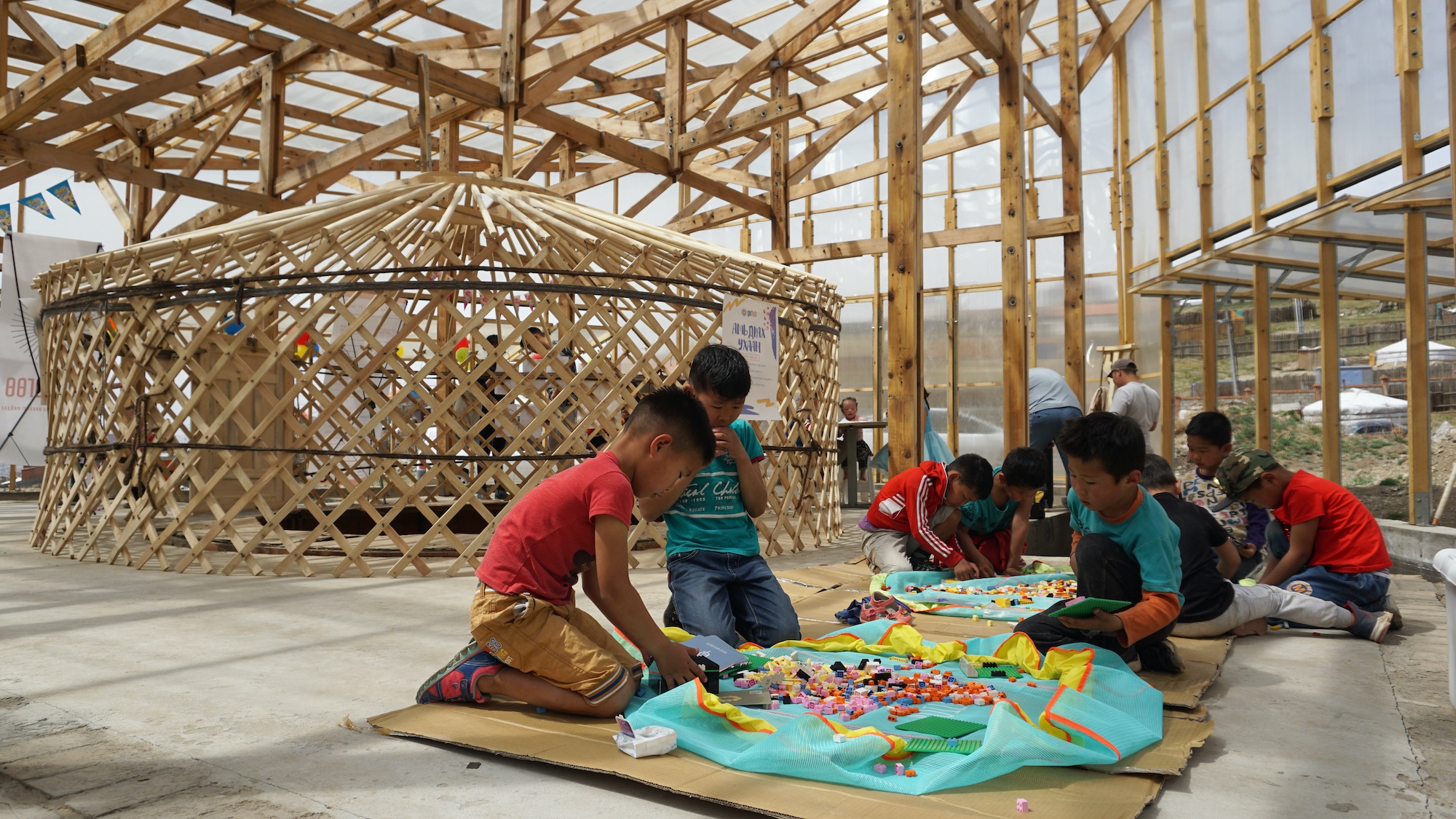
Ger Innovation Hub, Rural Urban Framework, University of Hong Kong, photo by Rural Urban Framework.


